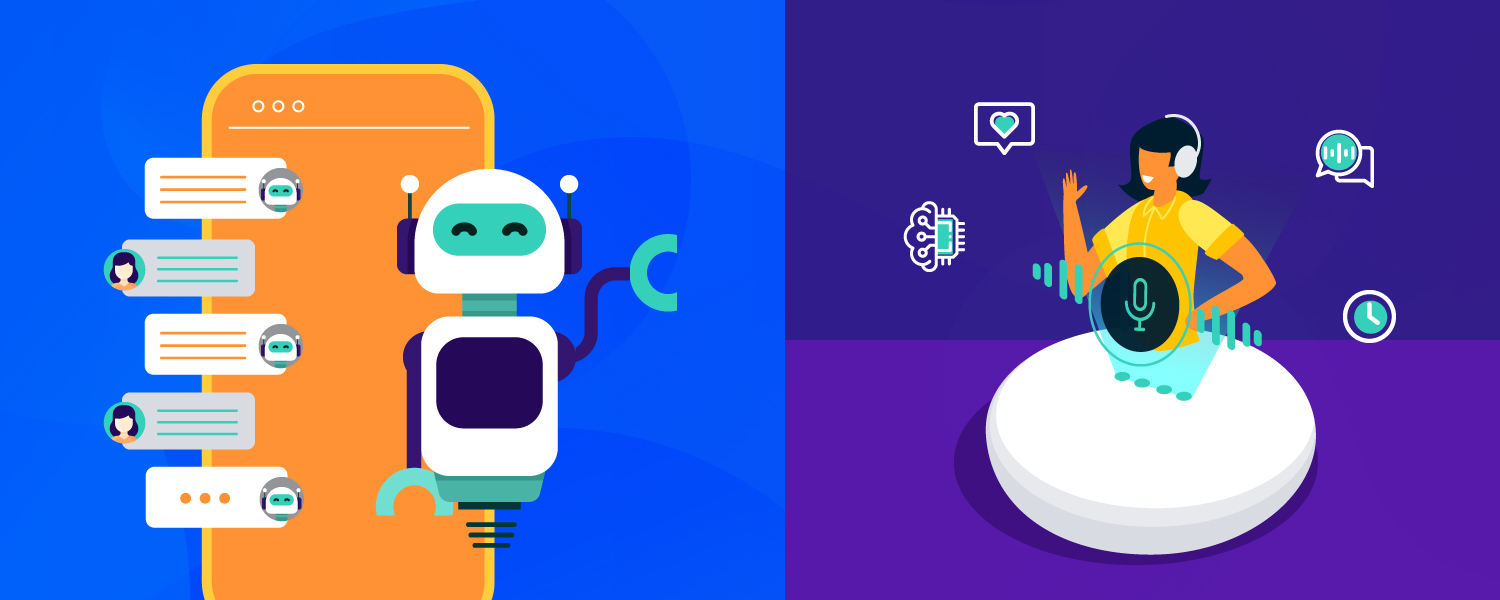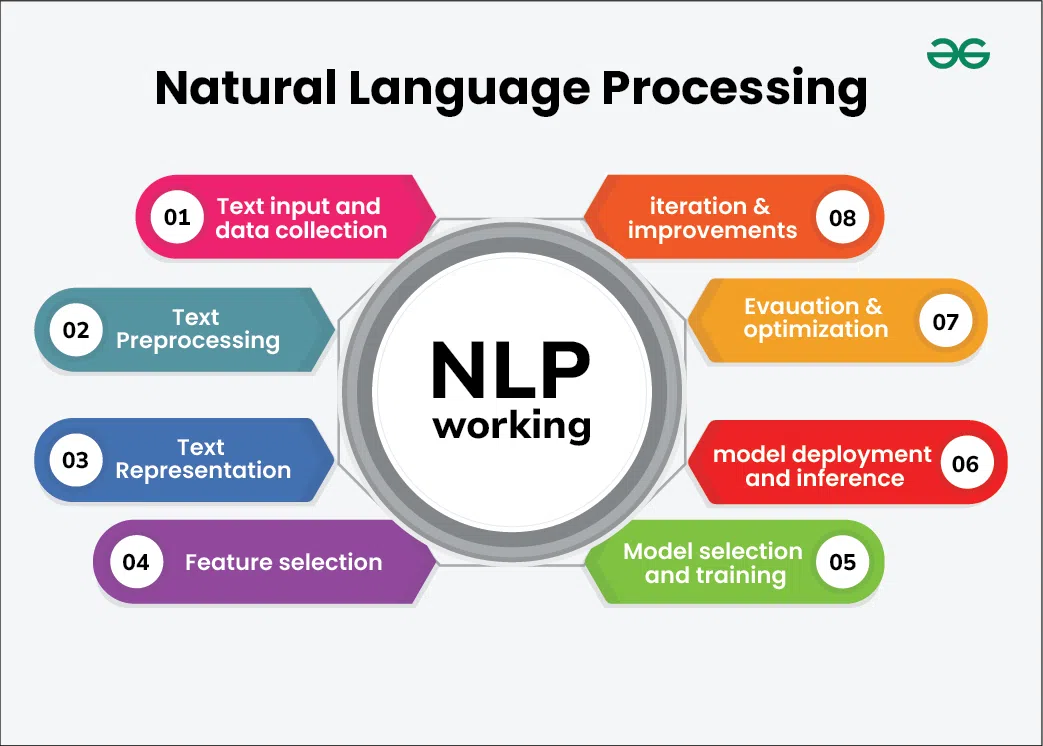The way businesses engage with their customers has transformed dramatically over the past few decades, with artificial intelligence (AI) playing a pivotal role. From the era of simple, rule-based chatbots to today’s sophisticated conversational agents, AI has reshaped customer service in ways once unimaginable. But this evolution has been more than just about improving response times or efficiency—it’s been about delivering deeper, more personalized, and intelligent customer interactions.
In this article, we will explore the key stages in the evolution of AI in customer service, dive into the advanced AI solutions offered by companies like SmartDev, and discuss the opportunities and challenges ahead
I. The Early Stage: Automation and Pre-Programmed Responses

AI’s journey in customer service began with basic automation, primarily in the form of chatbots and virtual agents that could only respond to simple, predefined questions. These systems, primarily rule-based, relied on matching keywords to pre-programmed responses. For example, if a customer asked about store hours, the bot would return a standard answer.
These early systems were primarily cost-saving measures designed to free up human agents from repetitive tasks. While they were effective for handling common questions, they couldn’t grasp context or engage in any meaningful conversation. Customers often found themselves frustrated when these bots couldn’t understand complex queries or offer more personalized assistance.
While useful, these early solutions were far from truly “intelligent” and often led to broken customer experiences.
II. Natural Language Processing (NLP): Bridging the Communication Gap

The introduction of Natural Language Processing (NLP) in AI marked a significant leap forward in the evolution of customer service. Instead of relying on rigid, rule-based responses, NLP-enabled systems could better understand the intent behind customer queries, breaking away from the keyword-matching model.
NLP-equipped chatbots began understanding not just what was asked but how it was asked. They could decipher complex sentence structures and respond with more relevant answers. NLP enabled these systems to:
- Interpret slang, idioms, and context.
- Understand misspelled words and different sentence structures.
- Provide more conversational and human-like responses.
Despite its improvements, early NLP had its limitations. It struggled with highly nuanced language and could not adapt to emotional cues in conversations. The responses, while improved, still felt somewhat robotic.
III. The Breakthrough: Machine Learning and Personalization
Machine learning transformed AI from a static system to a learning one. By training AI models on vast datasets of past customer interactions, machine learning empowered systems to improve with every conversation. These models didn’t just react—they learned, adapted, and improved.
AI began to understand context beyond individual queries, allowing for more personalized interactions. For example, if a customer had previously complained about a product issue, the AI could remember this in subsequent conversations, offering a more tailored and proactive response. In this stage, AI’s potential expanded beyond customer service interactions to delivering insights about the customer journey and preferences.
Machine learning models also introduced predictive analytics into customer service. By analyzing historical data and patterns, AI could anticipate customer needs and provide recommendations, transforming customer service from reactive to proactive. For example, if a customer frequently encountered a specific issue, the AI system could proactively offer a solution before the problem arose again.
This shift towards predictive and personalized customer service not only streamlined customer interactions but also improved customer satisfaction and brand loyalty.
IV. Conversational AI: The Age of Intelligent Interactions

Conversational AI represents the most advanced stage in the evolution of AI in customer service. While early bots could only handle transactional inquiries, conversational AI can carry out human-like interactions, grasping deeper levels of intent, context, and emotional cues.
These advanced systems are built on a combination of NLP, machine learning, and deep learning. Conversational AI can maintain context across multiple interactions, enabling it to:
- Understand and respond to complex queries.
- Handle multi-turn conversations, switching between topics seamlessly.
- Recognize sentiment and emotional cues, providing more empathetic responses.
For example, if a customer expresses frustration during an interaction, conversational AI can adapt its tone and language to show empathy, just as a human agent would. This nuanced capability sets conversational AI apart from earlier systems, where interactions were often stilted and mechanical.
Moreover, conversational AI can operate across various channels simultaneously—social media, websites, apps, and even voice-enabled devices. This omni-channel capability ensures consistency in customer interactions, regardless of where or how customers choose to engage with a brand. This is key in an era where customers expect seamless transitions between platforms and instant responses across all touchpoints.
V. The Role of AI in Crafting Personalized, Empathetic Experiences

In today’s customer-centric landscape, the role of AI extends beyond just improving operational efficiency. It is now critical in creating highly personalized, emotionally resonant experiences. Modern AI tools analyze vast amounts of customer data—from previous interactions, purchase history, preferences, and behavior patterns—to offer solutions tailored to each individual.
Consider the case of AI-enabled customer service during high-stakes situations, like flight cancellations or banking issues. When emotions run high, customers expect more than fast responses; they expect empathy, understanding, and a resolution to their problem. AI tools equipped with sentiment analysis can detect frustration or anxiety and adjust their responses accordingly, offering more thoughtful and supportive solutions.
This blend of efficiency and emotional intelligence makes AI a powerful tool for businesses looking to build deeper relationships with their customers. Companies leveraging these technologies are not just solving problems—they’re offering intelligent experiences that anticipate customer needs and leave a lasting positive impact.
VI. Overcoming the Challenges of AI in Customer Service
Despite its promise, implementing AI in customer service is not without its challenges. AI systems, no matter how advanced, still face limitations in dealing with highly complex or emotional problems. While conversational AI can grasp sentiment and context, it is still challenging to replicate the deep empathy and creativity that a human can offer in more delicate situations.
There is also the issue of data privacy. AI systems rely heavily on data to function, and businesses must be careful to comply with privacy regulations, such as GDPR, while ensuring their AI platforms are secure and transparent.
Finally, the cost of implementation remains a barrier for smaller enterprises. Although AI-as-a-Service platforms are making these solutions more accessible, implementing advanced AI-driven customer service tools can be resource-intensive.
VII. SmartDev’s AI Offerings: Revolutionizing Customer Service
As AI reshapes the future of customer service, SmartDev is at the forefront, providing businesses with advanced AI solutions designed to offer intelligent, personalized customer experiences. SmartDev’s tools allow companies to enhance their service models and engage with customers in ways that were once only possible through human agents.
7.1. Conversational AI and Multi-Channel Support
SmartDev’s conversational AI platforms integrate seamlessly with multiple channels, from web and mobile chat to social media and voice-activated devices. These solutions use cutting-edge NLP and machine learning technologies to understand customer intent and context, offering real-time, accurate responses across various touchpoints. Whether it’s answering routine questions or handling complex support tickets, SmartDev’s conversational AI ensures that customers receive timely, accurate, and empathetic responses.
7.2. Predictive Customer Service and Anticipatory Insights
SmartDev’s AI-driven predictive analytics enables businesses to proactively anticipate customer needs. This anticipatory approach to customer service helps resolve issues before they escalate and improves customer satisfaction. For example, based on past interactions, AI can predict when a customer might need support with a product and offer timely solutions before a problem arises.
7.3. AI-Driven Customer Insights and Analytics
Understanding customer behavior is key to improving service, and SmartDev’s AI-driven analytics platform provides businesses with deep insights into customer interactions. These insights help companies better understand their customers, allowing them to craft more personalized experiences and address underlying issues more effectively.
VIII. The Future of AI in Customer Service: What’s Next?

Looking ahead, the future of AI in customer service is not just about incremental improvements in response times or language understanding. The next frontier lies in emotional AI, where systems can fully understand and respond to human emotions, creating even deeper, more meaningful interactions. AI systems will become even more sophisticated in handling real-time translation, breaking down language barriers for global businesses, and further refining voice-activated support technologies.
As businesses continue to push the boundaries of customer service with AI, they will enjoy greater loyalty, satisfaction, and engagement, ensuring a competitive edge in an increasingly digital marketplace.
Ready to take your customer service to the next level with AI-driven, intelligent conversations? Look no further than SmartDev. Our solutions are designed to transform your customer interactions and provide the level of service your customers expect in today’s fast-paced world.
Visit SmartDev AI Solutions to explore how our cutting-edge AI tools can revolutionize your customer service experience. Let AI work for your business and deliver exceptional, personalized experiences to your customers!








